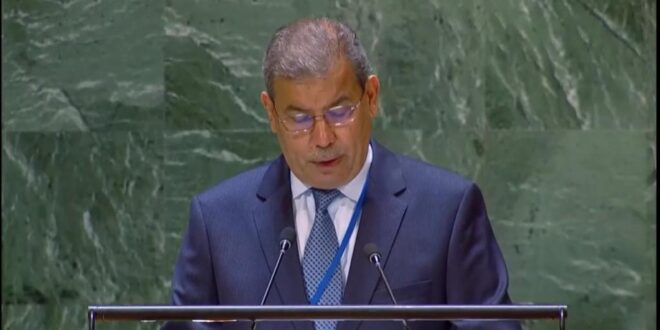NEW YORK-SABA
The Yemeni government has called for the necessity of coordination and joint work between it, represented by the Executive Unit for Displaced Persons Camp Management, international organizations, and United Nations agencies operating in Yemen.
This coordination is to be achieved through the use of statistics from the Executive Unit to reflect the actual needs of the displaced persons in the Humanitarian Response Plan for Yemen for the year 2024.
Currently, more than four million displaced persons reside in areas under government control, representing approximately 70% of the total number of the displaced persons.
In its statement before the General Assembly session to listen to the briefing by Assistant Secretary-General Robert Piper, the Special Adviser to the Secretary-General on finding solutions for internal displacement, the government emphasized the need to strengthen the capacity-building of the Executive Unit for Displaced Persons Camp Management to manage 646 camps, including the newly established management unit responsible for long-term solution planning.
This is aimed at supporting and implementing programs that enhance employment opportunities and development initiatives, in addition to a set of measures that encourage displaced persons to make voluntary return decisions, with the adoption of safe exit strategies to ensure a smooth and organized transition.
The statement, which was delivered by Yemen’s Permanent Representative to the United Nations, Ambassador Abdullah al-Sa’adi, affirmed that the Republic of Yemen is committed to doubling efforts to alleviate the difficult conditions affecting the displaced persons in various parts of Yemen.
It also expressed hope for the continuation of humanitarian interventions. The Yemeni government continues to facilitate the delivery of humanitarian aid to those eligible for it and ease the movement of humanitarian workers.
Additionally, efforts are being made to ensure effective and sustainable strategies for achieving long-term solutions, including mobilizing funding for relief and development programs and voluntary resettlement projects for the displaced persons.
“Internal displacement is one of the challenges facing the Yemeni government, primarily caused by the war waged by the Houthi militias and the violations and crimes committed in their controlled areas, which constitute a flagrant violation of international humanitarian law and human rights law,” said al-Sa’adi.
“This has forced millions of Yemeni people to be displaced. In addition to the impacts of climate change and natural disasters that have exacerbated this crisis,” he added.
“To alleviate the conditions of the displaced and protect them, and provide decent living conditions for them and find long-term solutions by addressing displacement as a challenge and finding effective and sustainable solutions, the Executive Unit for Camp Management in the temporary capital of Aden was reactivated in mid-2017,” he said.
He further explained that the Executive Unit and its branches in several governorates are working to implement the national policy aimed at addressing the challenges resulting from internal displacement and the effects associated with climate change. The goal is to establish an integrated framework to address the displacement crisis, covering all stages of displacement from pre-displacement, through the displacement itself, to the voluntary return of displaced persons to their homes.
He pointed out that seasonal climate challenges in several Yemeni governorates have led to new waves of displacement, and with the continued recurring attacks by the Houthi militias in various areas, including displaced persons’ camps, as well as the danger of landmines planted by these militias, which hinder the return of displaced persons to their homes, the Executive Unit has conducted a series of workshops in several provinces.
These workshops aimed at discussing and developing mechanisms for implementing the national policy on displacement and finding permanent solutions with broad participation from relevant bodies to build a unified national vision for dealing with displacement issues and achieving permanent and comprehensive solutions.
 Ministry of Foreign Affairs and Expatriates Official Web Site
Ministry of Foreign Affairs and Expatriates Official Web Site
